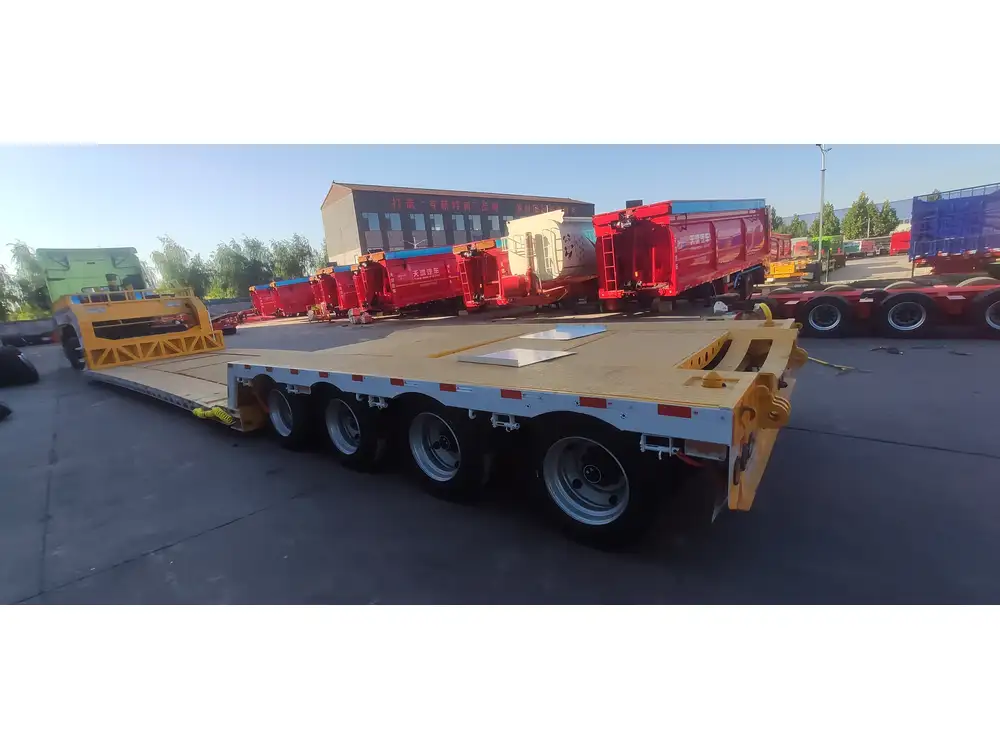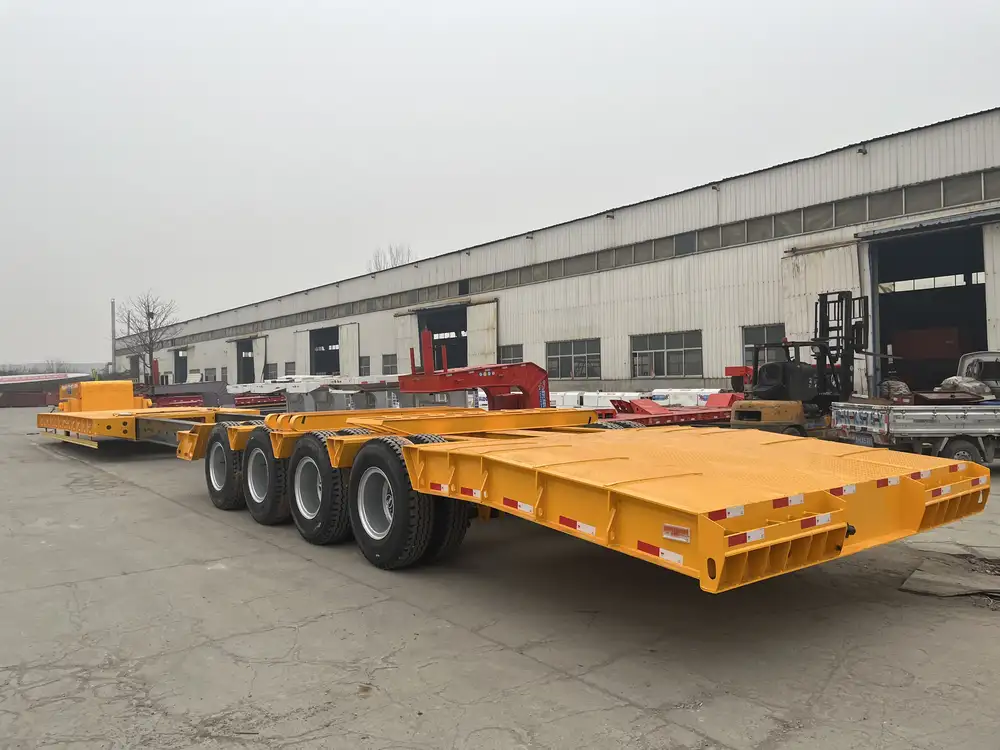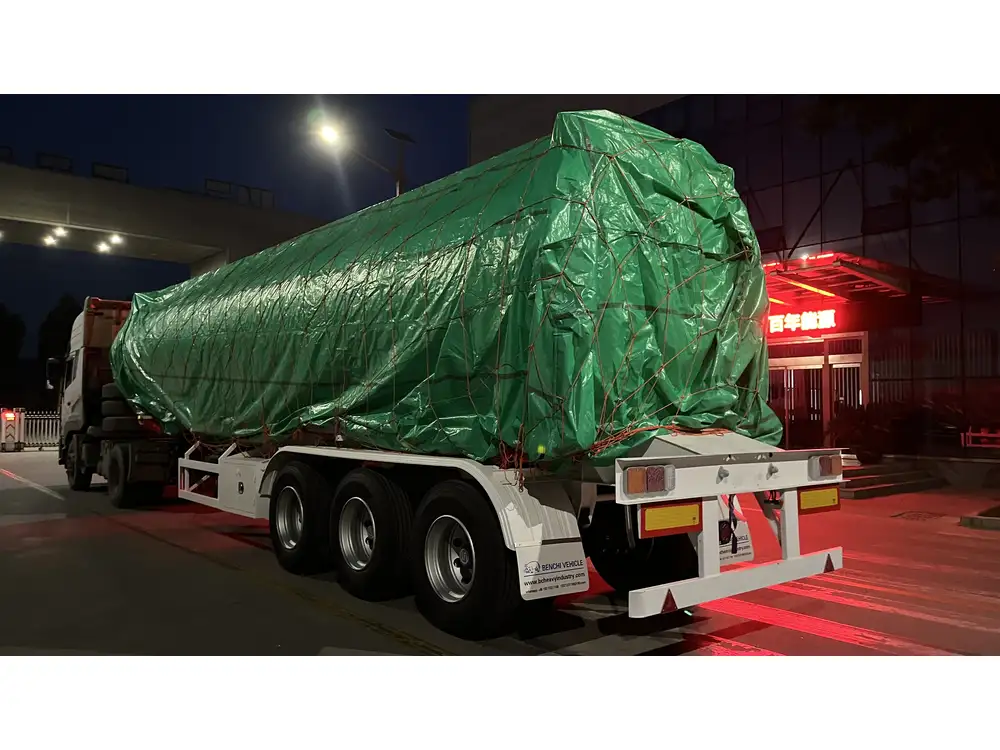The world of trailers encompasses a plethora of dimensions, specifications, and categories, but one of the most frequently asked questions is, “How long is a trailer?” This inquiry delves far beyond a straightforward answer, as it intertwines with various classifications of trailers, intended uses, and industry regulations. In this comprehensive article, we will explore the diverse lengths of trailers, factors affecting their dimensions, and critical considerations when selecting the appropriate trailer for your needs.
Types of Trailers and Their Standard Lengths
To adequately address the question of trailer length, it is beneficial to categorize trailers into their respective types, as each possesses distinct characteristics and typical lengths. Below is a detailed table summarizing various trailer types along with their standard lengths:
| Trailer Type | Typical Lengths | Common Uses |
|---|---|---|
| Utility Trailers | 4 to 8 feet | Transporting tools, equipment, and small vehicles |
| Car Haulers | 16 to 24 feet | Transporting vehicles, including cars and motorcycles |
| Enclosed Trailers | 10 to 40 feet | Protecting goods from elements; often used for moving |
| Flatbed Trailers | 20 to 53 feet | Hauling heavy machinery and construction materials |
| Gooseneck Trailers | 20 to 40 feet | Agriculture and heavy-duty transportation |
| Semi-Trailers | 28 to 53 feet | Freight shipping and logistics across long distances |
This table serves as a foundational reference for understanding the breadth of trailer lengths within various categories. Note that while these are standard lengths, custom trailers can exhibit further variations based on customer needs and specific applications.
Determining Factors Affecting Trailer Length
Understanding trailer length requires delving into multiple factors that affect overall dimensions. Below are some critical elements that influence how long a trailer can be:
Regulatory Standards: Different regions (e.g., the United States, Europe) have specific regulations regarding the maximum allowable trailer lengths, which vary by type and intended use. In the U.S., for example, federal regulations may limit the maximum length of semi-trailers to 53 feet, while individual states may impose additional restrictions.
Type of Load: The nature of the cargo being transported can dictate trailer length. For instance, transporting oversized loads or particular equipment may require custom trailers designed to accommodate longer dimensions.
Trailer Configuration: The design and structure of the trailer—whether it is a flatbed, enclosed, or specialized trailer—will inherently influence its overall length. Certain configurations can optimize length for specific types of cargo, balancing efficiency with legal requirements.
Intended Use: Commercial enterprises might prioritize different lengths based on operational requirements. For example, freight carriers may prefer longer trailers for higher load capacities, whereas personal or small business users may opt for shorter utility trailers for convenience.
Towing Vehicle Capability: The towing vehicle’s capacity also plays a critical role. Regulations often take into account the combined length of the towing vehicle and the trailer; thus, exceeding specific limits may be impractical or illegal.

The Importance of Selecting the Right Trailer Length
Selecting the appropriate trailer length is not merely a matter of preference; it significantly impacts operational efficiency and legal compliance. Consider the following factors when making your decision:
Capacity and Loading Efficiency
A trailer’s length directly correlates with its loading capacity. For instance, a longer flatbed trailer can accommodate more goods, leading to fewer trips and lower fuel costs. However, overloading is not just a matter of exceeding weight limits; improperly distributed loads can affect towing stability and pose safety hazards during transit.
Maneuverability and Accessibility
Longer trailers, especially those used in urban environments, can pose challenges regarding maneuverability. Consideration must be given to turning radius, tight spaces, and parking availability. Trade-offs sometimes must be made between capacity and versatility, particularly for businesses operating in various locations.

Cost of Ownership
Longer trailers generally incur higher purchase prices, maintenance costs, and insurance. Business owners must analyze the cost-to-benefit ratio, weighing potential revenue from increased capacity against these higher operating expenses.
Practical Considerations and Common Misconceptions
Addressing the user experience surrounding trailer length is crucial, as there are common misconceptions that can lead to costly mistakes. Here, we dissect some prevalent misunderstandings:
Myth 1: All Trailers are Universal in Length
Many believe that trailers are universally categorized by a one-size-fits-all approach. In reality, trailers are distinctly designed and built for target purposes. Understanding industry nuances is essential before assuming that any trailer can meet specific needs.

Myth 2: Bigger is Always Better
While larger trailers do offer increased carrying capacity, they come with their own set of challenges—namely, operating costs, fuel efficiency, and parking constraints. Evaluating the real needs of the operation is essential to selecting the right size.
Myth 3: Trailer Length Equals Towing Difficulty
While longer trailers can be more challenging to tow, it’s not the length alone that determines towing difficulty. Factors like weight distribution, trailer design, and the towing vehicle’s capabilities play critical roles in how easily one can handle a combination on the road.
Key Considerations When Buying or Renting a Trailer
Now that we’ve explored the nuances of trailer length, it’s essential to present key factors to consider when purchasing or renting a trailer:

Assess Your Needs
Begin by critically analyzing the intended use of the trailer. Determine the types of loads you anticipate transporting, the frequency of use, and the distances involved. A utility trailer for occasional personal use stands in stark contrast to daily commercial operations.
Review Legal Regulations
Before making any decision, familiarize yourself with the local and federal regulations governing trailer lengths in your area. An easy way to avoid fines or compliance issues is to ensure your trailer adheres to legal standards.
Test Your Vehicle Compatibility
Ensure that your towing vehicle meets the necessary specifications for the trailer you intend to purchase or rent. Refer to both the vehicle’s maximum towing capacity and its ability to handle the trailer’s length and weight.

Consult Industry Experts
Never hesitate to consult professionals within the trailer industry. They can provide valuable insights and recommendations based on experience and knowledge of market trends. Manufacturers’ representatives, logistics consultants, or seasoned towing operators can steer you toward informed decisions.
Conclusion: Navigating the Trailer Length Landscape
In conclusion, understanding trailer lengths encompasses a wide array of considerations, from industry regulations and practical applications to individual needs and the characteristics of the towing vehicle. With so many factors at play, selecting the ideal trailer length becomes a nuanced process that requires thorough assessment.
By navigating through the complexities surrounding trailer dimensions, we establish a foundation for effective decision-making, ensuring that businesses and individual users alike can find the perfect balance between capacity, maneuverability, and compliance. Whether you are a fledgling entrepreneur or a seasoned logistics professional, comprehending how long a trailer needs to be will ultimately facilitate greater operational success and safety on the road.
As the landscape of trailer manufacturing evolves, staying abreast of industry standards and innovative designs is crucial for anyone involved in the transportation or logistics sectors. With meticulous research and consideration, you can make informed decisions that enhance productivity and reliability in your operations.



